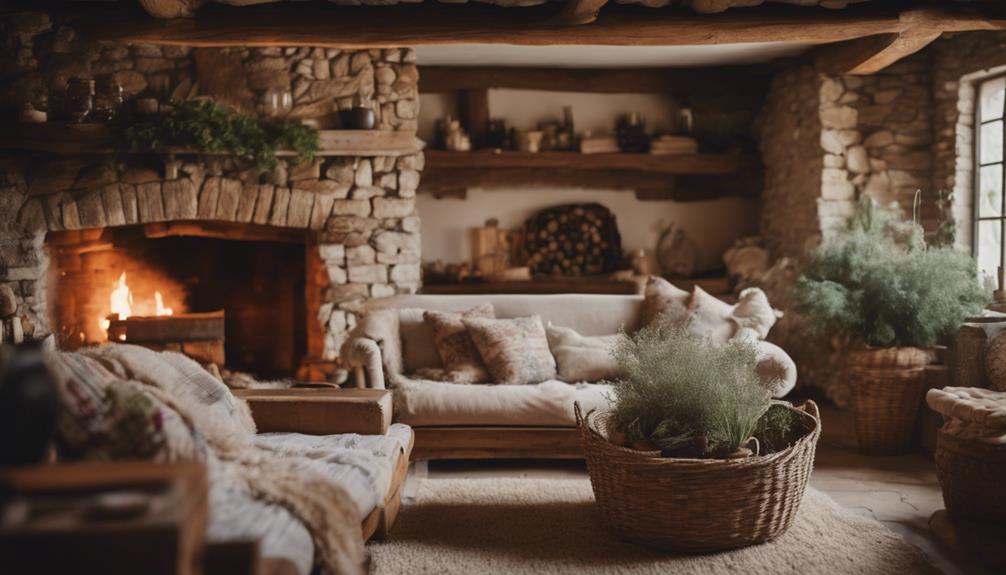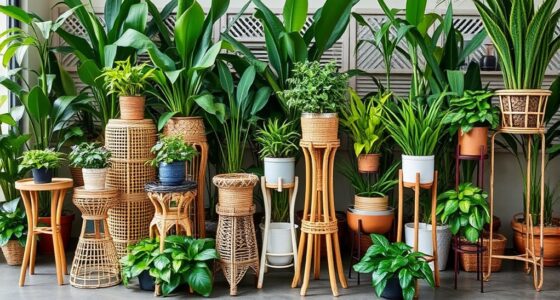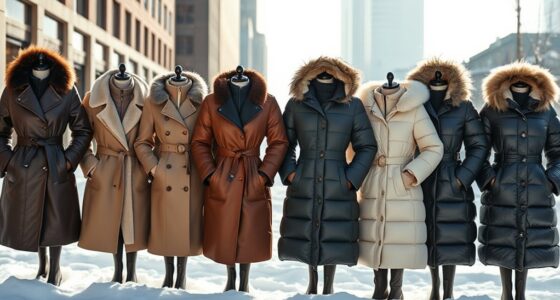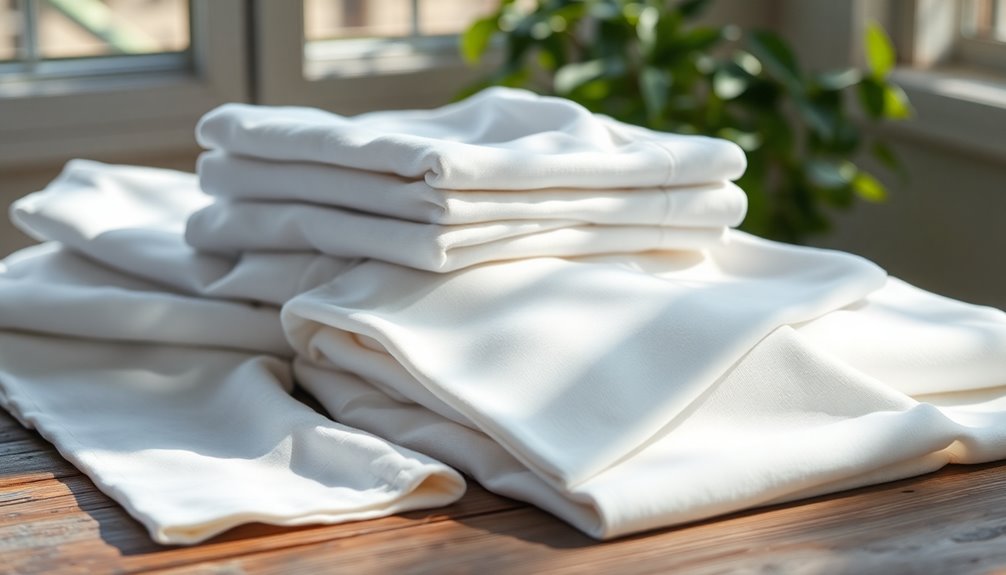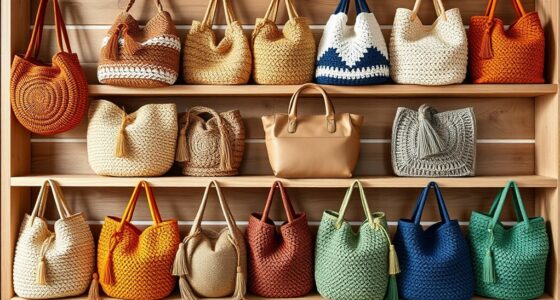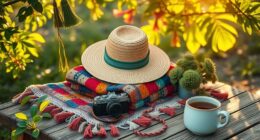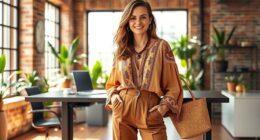When I look for eco-conscious fashion photography studios, I consider their sustainable practices and equipment. It's essential that they use cameras and lenses made from recycled materials, along with biodegradable backdrops. I've found that studios incorporating energy-efficient lighting, like LEDs, not only cut electricity costs but also minimize their carbon footprint. Additionally, investing in second-hand gear supports sustainability and can often yield high-quality results. If you're curious about the specific studios that exemplify these values and what they use, you'll uncover some enlightening options shortly.
Key Takeaways
- Opt for studios that prioritize sustainable equipment, such as cameras made from recycled materials and eco-friendly tripods.
- Choose studios that utilize energy-efficient lighting solutions like LED lights to reduce electricity consumption and enhance shooting conditions.
- Look for studios that implement a no-print policy for proofs to minimize paper waste and promote digital alternatives.
- Support studios that source materials locally, thereby reducing transportation emissions and supporting local economies.
- Encourage the use of renewable energy sources, such as solar panels, to offset the carbon footprint of fashion photography operations.
Stunning Digital Photography
If you're a photographer looking to elevate your skills while embracing eco-conscious practices, "Stunning Digital Photography" is the perfect guide for you. This thorough manual dives into both the fundamentals and advanced techniques like underwater and light painting, providing about 500 pages of clear, structured content. I particularly love the over 20 hours of integrated video tutorials, which make learning interactive and engaging. Each chapter ends with exercises that encourage hands-on practice, helping me reinforce what I've learned. Plus, the regular updates based on reader feedback keep the material relevant. Joining the dedicated Facebook group has been invaluable, allowing me to share images and get feedback from fellow photography enthusiasts. This book truly transforms my photography journey.
Best For: Photographers of all skill levels who want to enhance their techniques while engaging in a supportive community.
Pros:
- Comprehensive coverage of both fundamental and advanced photography techniques.
- Over 20 hours of integrated video tutorials for an interactive learning experience.
- Regular updates and a dedicated community for feedback and support.
Cons:
- The book's length (approximately 500 pages) may be daunting for some beginners.
- Access to video tutorials requires internet connectivity, which may not be convenient for all users.
- Some readers may find the emphasis on exercises and quizzes time-consuming.
National Geographic Photo Basics: The Ultimate Beginners Guide to Great Photography
For anyone venturing into the world of photography, "National Geographic Photo Basics: The Ultimate Beginners Guide to Great Photography" stands out as an essential resource. I found it perfect for beginners and photography enthusiasts alike, offering clear, step-by-step guidance on topics like camera selection, exposure, and composition. Joel Sartore's expertise shines through, making complex concepts easy to grasp. The book's practical approach, featuring pro tips and quick assignments, helped me apply what I learned immediately. I loved the beautiful visuals and real-life examples, which really brought the lessons to life. Whether you're using a DSLR or your smartphone, this guide equips you with the skills to capture stunning images and tells enchanting stories through your photography.
Best For: This book is best for beginners, photography students, and photo enthusiasts looking to improve their skills in DSLR photography.
Pros:
- Clear, step-by-step guidance on essential photography topics.
- Beautiful visuals and real-life examples enhance the learning experience.
- Practical assignments and pro tips facilitate immediate application of skills.
Cons:
- May not cover advanced photography techniques for experienced photographers.
- Some readers might prefer more in-depth discussions on specific topics.
- Limited focus on post-processing techniques and editing software.
The 2019 Guide to Pricing Your Photography
The 2019 Guide to Pricing Your Photography stands out as an essential resource for aspiring photographers looking to navigate the often intimidating landscape of service pricing. Authored by Anthony Morganti, this guide is perfect for beginners and intermediates alike. It provides a solid framework for determining how to price your services, tailored to your unique situation. I found it particularly helpful when I was shifting from hobbyist to professional. The guide covers various photography genres and includes practical advice on mini sessions, making it easy to identify competitive pricing. Plus, Morganti's no-nonsense style keeps the information accessible. I highly recommend this guide, along with his YouTube channel, for anyone feeling anxious about pricing their photography work.
Best For: Photographers transitioning from hobbyist to professional seeking practical guidance on pricing their services.
Pros:
- Offers a clear framework for pricing across various photography genres.
- Written in a concise, accessible style that simplifies complex pricing strategies.
- Includes valuable insights and recommendations for mini sessions and competitive pricing.
Cons:
- May not cover advanced pricing strategies for seasoned professionals.
- Limited to photography pricing; other business aspects are not addressed.
- Some readers might find the information basic if they have prior experience in pricing.
The Cavapoo: A Photography Coffee Table Book
Capturing the heartwarming essence of Cavapoos, this photography coffee table book is perfect for dog lovers who appreciate stunning visuals and the joy these dogs bring. With over 250 premium photographs, it showcases the breed's unique charm, from playful puppies to dignified adults. The quality and variety of the images are impressive, with talented photographers offering diverse perspectives that highlight each dog's personality in various settings. Although some readers wish for more action shots, the minimalist design allows each photo to shine. Personally, I've found myself reflecting on my own experiences with Cavapoos after viewing this book. It's a delightful gift, sparking conversations and even inspiring some to contemplate adopting a Cavapoo into their lives.
Best For: Dog lovers and Cavapoo enthusiasts who appreciate high-quality photography and the emotional connections these dogs inspire.
Pros:
- Stunning Visuals: Over 250 premium photographs that capture the charm and personality of Cavapoos.
- Minimalist Design: The layout emphasizes the images, allowing each photograph to make a strong impact.
- Emotional Connection: The heartwarming images resonate with readers, often inspiring thoughts of adoption and personal reflections.
Cons:
- Limited Action Shots: Some readers desire more variety in poses, particularly dynamic and playful images.
- Textual Content: The minimal text may leave some readers wanting more context or information about the breed.
- Niche Appeal: Primarily targets Cavapoo lovers, which may limit its audience compared to more general dog photography books.
iPhone 15 Seniors Guide: Complete Manual to Master Your Device
Steering through the iPhone 15 can feel intimidating, especially for seniors who might not be as familiar with technology. That's where the iPhone 15 Seniors Guide comes in. This manual offers clear, illustrated instructions that help you set up your device and troubleshoot common issues. I found it particularly useful for mastering features like FaceTime and Apple Pay. The guide's large print makes it easy to read, which is a plus for those of us who need a bit of extra help. However, some users have mentioned it could be better organized. Still, it's a valuable resource for anyone looking to navigate their new iPhone confidently. I encourage you to check it out and access your device's potential!
Best For: Seniors and novice users looking for an accessible and comprehensive guide to master their iPhone 15.
Pros:
- Clear, illustrated step-by-step instructions make it easy to follow.
- Large print enhances readability for users with vision challenges.
- Covers essential features like FaceTime and Apple Pay, promoting user confidence.
Cons:
- Some users find the organization of the guide lacking.
- Complaints about faded images and unclear instructions may hinder understanding.
- The absence of an index makes it difficult to locate specific information quickly.
Bill Cunningham: On the Street: Five Decades of Iconic Photography
For anyone passionate about the intersection of fashion and culture, "Bill Cunningham: On the Street: Five Decades of Iconic Photography" is a must-have. This stunning collection showcases Cunningham's iconic photography from The New York Times and includes never-before-seen gems. It's more than just fashion; it captures the essence of New York City and Paris, reflecting the people and cultural shifts over the decades. I love how readers reminisce about the eras portrayed, making it both a nostalgic journey and a fun exploration of fashion history. The essays enrich the experience, offering insights into Cunningham's influences and cultural moments he documented, solidifying his legacy as a street photography master. It's a perfect gift for any occasion, too!
Best For: Anyone interested in fashion history and cultural photography, especially those who appreciate the artistry of street style and the evolution of trends over time.
Pros:
- Stunning visuals that make it an attractive coffee table book.
- Rich cultural documentation capturing significant moments in New York City and Paris.
- Nostalgic value for readers familiar with the eras depicted, enhancing the emotional connection.
Cons:
- Some readers may find it too focused on specific eras, limiting its appeal to a broader audience.
- The book may be misplaced easily, as noted by some who experienced frustration in finding it again.
- Limited availability of certain photographs may leave fans wanting more of Cunningham's iconic work.
Factors to Consider When Choosing Eco-Conscious Fashion Photography Studios: Equipment Guide

When I'm choosing an eco-conscious fashion photography studio, I focus on the equipment they use. It's essential to look for sustainable options, energy-efficient lighting, and materials that minimize waste. Considering the studio's overall carbon footprint also helps me make a more informed decision.
Sustainable Equipment Options
Choosing sustainable equipment options is vital for any eco-conscious fashion photography studio. I always consider cameras and lenses made from recycled materials or those with energy-efficient designs. This choice not only reduces environmental impact but also enhances the overall efficiency during shoots. Investing in sustainable fashion photography equipment also extends to the lighting and backdrop options. LED lights are a great choice for their energy efficiency and long lifespan, while backdrops made from organic or recycled materials help reduce the studio’s carbon footprint. Prioritizing sustainable equipment options not only aligns with the studio’s eco-conscious values but also sets a positive example for the fashion industry as a whole.
When it comes to support equipment, I look for tripods made from renewable resources or from companies that prioritize eco-friendly manufacturing practices. This guarantees that the tools I rely on align with my values. Additionally, I explore biodegradable or recyclable backdrops and props, which ensure that everything used in a shoot can be disposed of responsibly.
Investing in second-hand or refurbished photography gear is another practice I embrace. It extends the lifecycle of equipment while minimizing the demand for new manufacturing, which is vital in reducing waste.
Energy-Efficient Lighting Solutions
Lighting can make or break a shoot, and that's why I always switch to energy-efficient solutions in my eco-conscious fashion photography studio. I've found that using LED lights consumes up to 80% less energy than traditional incandescent bulbs, which greatly lowers my electricity costs. Plus, these lights have an impressive lifespan of up to 25,000 hours, reducing waste and the inconvenience of frequent replacements.
Another perk? Energy-efficient lights emit less heat. This means I don't have to crank up the cooling systems, creating a more comfortable environment for both models and myself during long shoots. I've noticed that my photos also benefit from enhanced color accuracy; modern LEDs offer a high Color Rendering Index (CRI), which reproduces colors more faithfully than older technologies.
Eco-Friendly Backdrops Materials
In my pursuit of eco-conscious fashion photography, I've discovered that selecting the right backdrop materials is just as essential as the lighting setup. I prioritize eco-friendly options like organic cotton, hemp, or recycled fabrics. These sustainable materials considerably reduce environmental impact compared to conventional choices.
I also find biodegradable backdrops, often made from paper or natural fibers, to be a smart choice. They decompose after use, minimizing landfill waste. When it comes to printing, I guarantee the use of water-based inks and dyes. They're far less harmful than petroleum-based alternatives, reducing toxic runoff into our environment.
Sourcing backdrops from local suppliers is another practice I embrace. It lowers carbon emissions related to transportation, making the entire production process more sustainable. Additionally, I've started using reusable backdrops made from durable, recycled materials. They can be cleaned and used multiple times, which cuts down on the need for single-use products.
Waste Reduction Practices
After selecting eco-friendly backdrop materials, I turn my attention to waste reduction practices in eco-conscious fashion photography studios. One of the first things I notice is the widespread use of digital photography. This approach minimizes film and chemical waste, considerably lowering the studio's environmental footprint. I also see that many studios are committed to reusing and recycling materials like backdrops and props, which not only reduces waste but also promotes sustainability in their operations.
I appreciate studios that implement a strict no-print policy for proofs, offering them only digitally. This helps cut down on paper waste while giving clients easy access to their images. Another factor I consider is the sourcing of local and sustainable materials for set design. This practice not only reduces transportation emissions but also supports eco-friendly initiatives within the fashion industry.
Carbon Footprint Considerations
When choosing an eco-conscious fashion photography studio, I always consider the carbon footprint associated with the equipment being used. Lighting plays a huge role here; I prefer studios that utilize energy-efficient LEDs, which can reduce energy consumption by up to 80% compared to traditional incandescent lights. This simple switch can greatly lower the studio's carbon emissions.
I also look at the sourcing of photographic gear. Opting for locally sourced or second-hand equipment minimizes the carbon footprint tied to production and transportation. If a studio uses renewable energy sources like solar panels, that's a major plus. It offsets their carbon footprint by providing clean energy for operations.
The choice of props and backgrounds matters too. Studios that use recycled or upcycled materials are making a conscious effort to lower their environmental impact. Additionally, I appreciate studios that implement digital file storage over physical prints, as this reduces paper waste and the carbon emissions linked to printing and shipping.
Frequently Asked Questions
What Are Eco-Conscious Materials for Fashion Photography Backdrops?
When I think about eco-conscious materials for fashion photography backdrops, I often consider organic cotton, linen, and recycled fabrics. These materials not only look great but also reduce environmental impact. I've found that using bamboo or hemp is an excellent choice too, as they're sustainable and durable. Plus, there are even options like biodegradable backdrops made from natural fibers. It's rewarding to create beautiful images while being kind to our planet.
How Can I Reduce Waste in Fashion Photo Shoots?
When I plan a fashion photo shoot, I focus on reducing waste in several ways. First, I choose reusable backdrops and props instead of disposable ones. I also collaborate with local designers to borrow outfits, minimizing the need for new purchases. After the shoot, I recycle any materials I used and donate unused items. By being mindful of my choices, I can considerably cut down on waste while still creating stunning visuals.
Are There Eco-Friendly Lighting Options for Studios?
When I first switched to eco-friendly lighting, it felt like replacing a gas-guzzling car with a sleek electric model. There are plenty of options like LED lights, which consume less energy and last longer, reducing waste. I've found that using daylight-balanced LEDs not only saves the planet but also enhances my photos with natural light. It's rewarding to know my studio's lighting choices are as sustainable as my creative vision.
What Certifications Should I Look for in Sustainable Photography Studios?
When I'm searching for sustainable photography studios, I look for certifications like Green Business Certification or Energy Star ratings. These indicate that a studio practices eco-friendly methods. I also pay attention to memberships in organizations like the Sustainable Business Network, which guarantees they meet certain environmental standards. By focusing on these certifications, I can feel confident that I'm supporting a studio that genuinely prioritizes sustainability in its operations.
How Do I Choose Eco-Friendly Props for Fashion Photography?
When I think of eco-friendly props, I picture a lush forest, vibrant and alive, symbolizing our connection to nature. To choose sustainable props for fashion photography, I focus on materials like reclaimed wood, organic fabrics, or biodegradable items. I also consider renting or borrowing rather than buying new. By prioritizing local artisans, I not only support the community but also reduce my carbon footprint. It's all about making conscious choices that reflect our shared responsibility for the planet.
Conclusion
To summarize, choosing eco-conscious fashion photography studios not only elevates your brand but also contributes to a sustainable future. Did you know that the fashion industry is responsible for 10% of global carbon emissions? By opting for studios that prioritize eco-friendly practices, you're making a significant impact. Let's embrace a greener approach to fashion photography together, ensuring that our love for style doesn't come at the expense of our planet. Your choices can inspire change!

